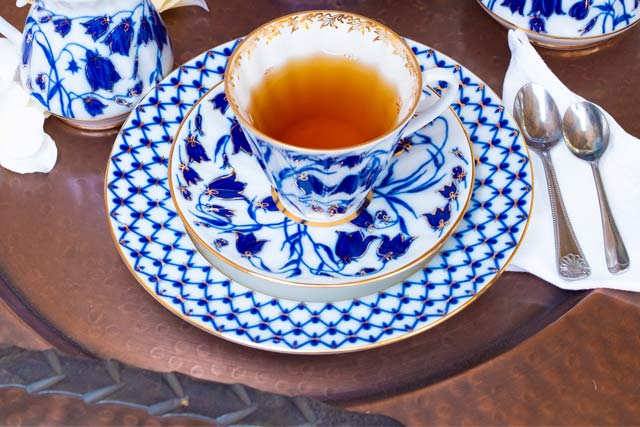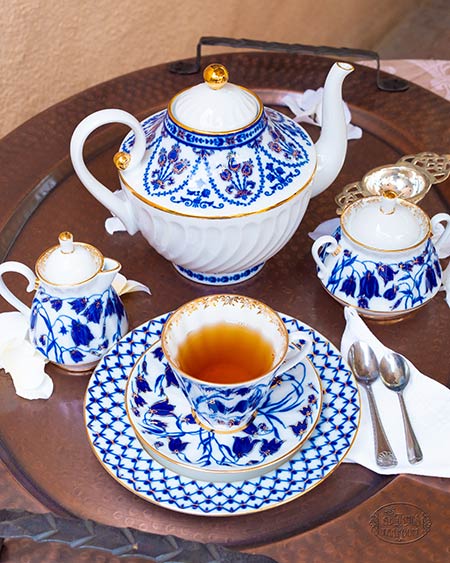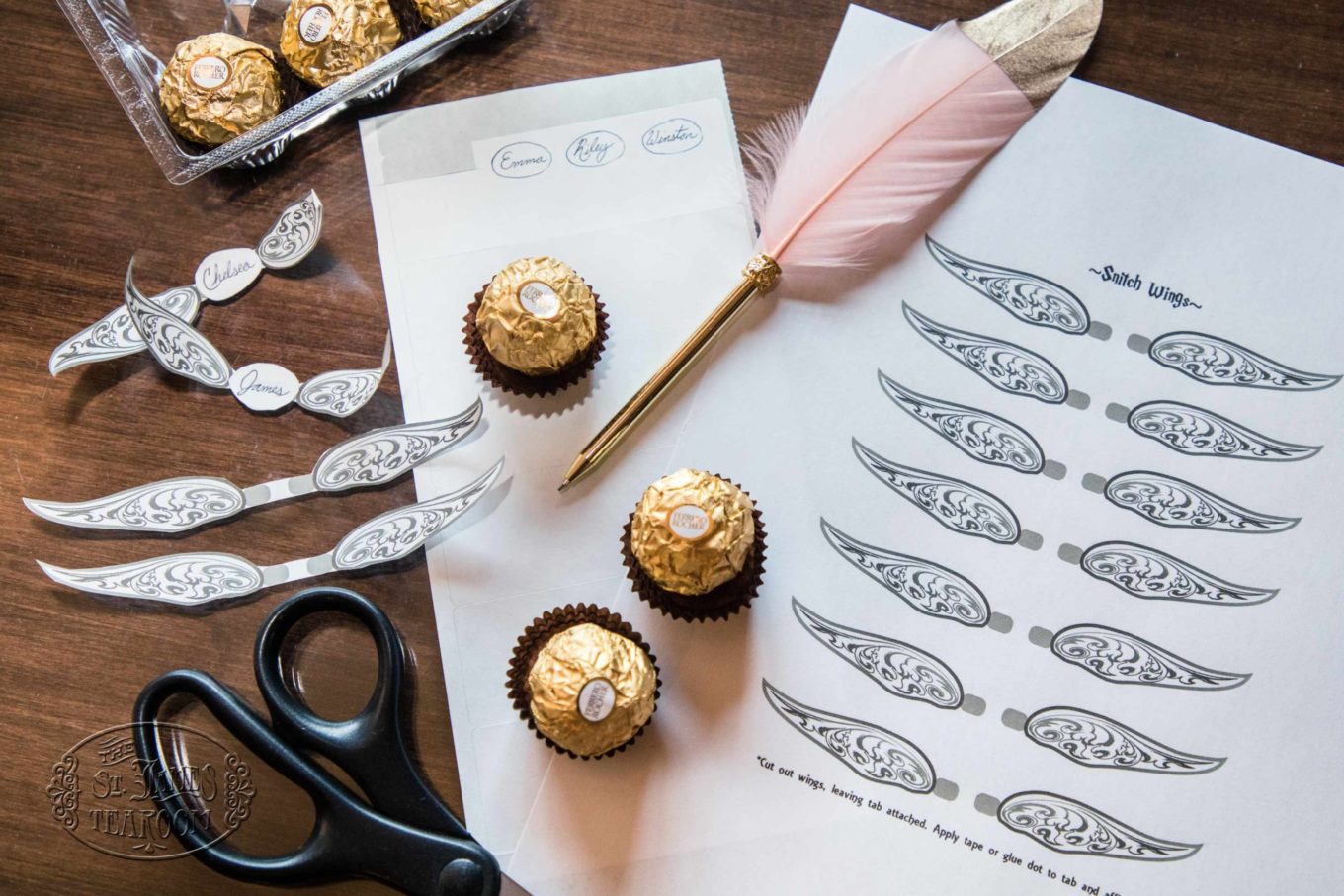
May Featured China: Lomonosov Porcelain

The Imperial Porcelain Factory, formally known as the Lomonosov Porcelain Factory, was founded in St. Petersburg, Russia, in 1744 by order of Empress Elizabeth, daughter of Peter the Great, after Dmitry Ivanovich Vinogradov discovered the secret of creating hard-paste porcelain.
Though found in the traditional shapes of teapots and teacups of England, Russian china has a few slight differences to reflect their tea culture. The most notable is the size of the teapots.
Many of the Russian teapots are small in size because they were created to hold a syrup-like tea concentrate called zavarka, rather than English-style steeped tea. A small amount of this concentrate, made of tea and a fruit jam, is poured into a teacup. Then the rest of the cup is filled with hot water from a samovar, a traditional Russian tea kettle. With enough hot water, even a small pot of the tea concentrate can last for hours.





